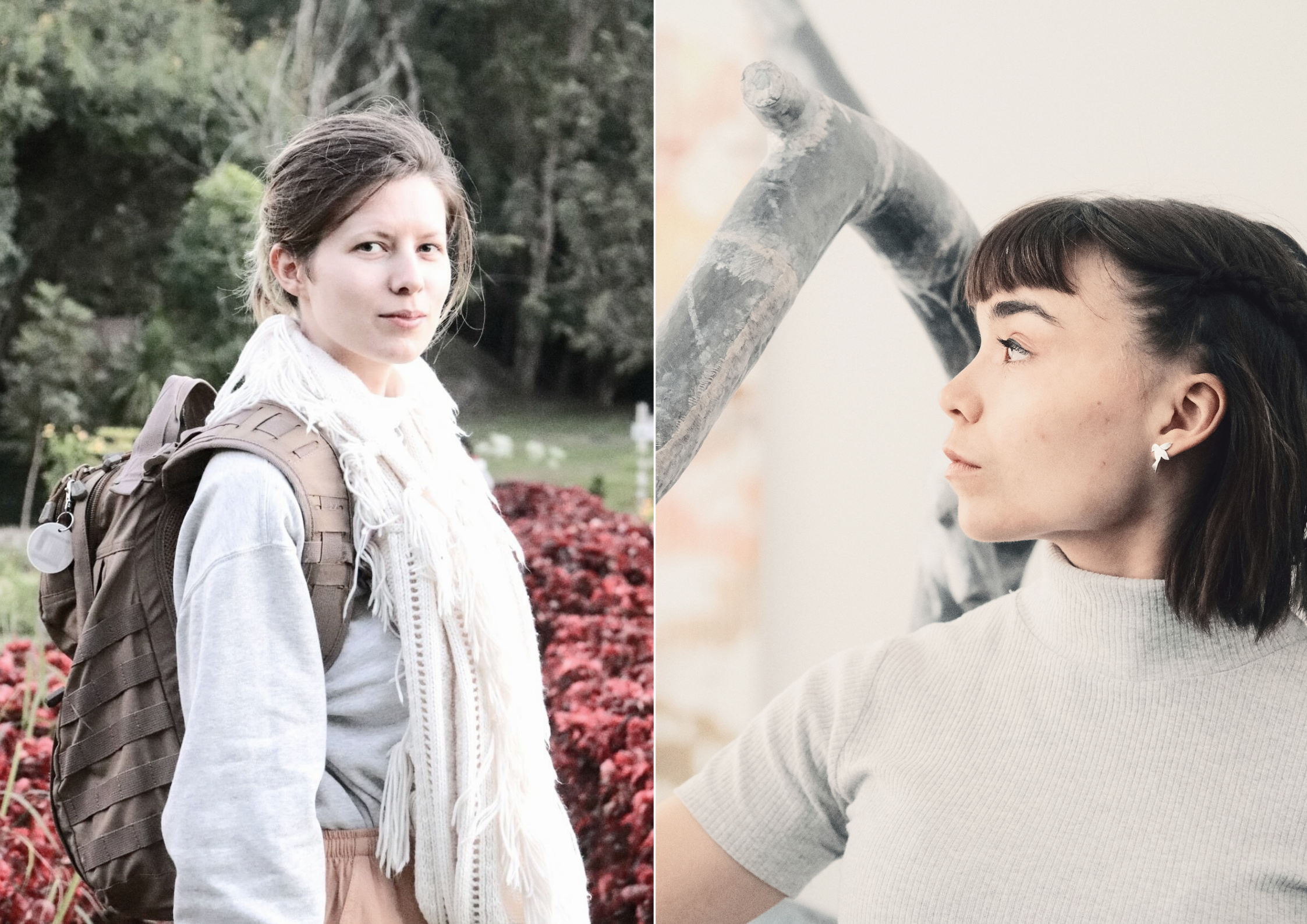Hydro Communication
Selected for the Curious Encounters 3 residency at Earthwise Residency, Mariia and Janina will spend 8 weeks engaged with hydro communication: the codified language of water that flows inside most more-than-human actors. In an interdisciplinary collaboration, they’ll explore how water serves as a medium for information transmission among these entities, revealing insights about their state and conceptualization of safe spaces.
The language of water plays a vital role in the communication and survival of various ecosystems. Water acts as a conduit for chemical signals in plants, while many aquatic animals rely on water to communicate through sound waves, chemical signals, and electrical
impulses. Water brings all living together, and plays a significant role in old mythology, community healing practices and prescience.
With experiments by Dr. Masaru Emoto which suggest that water can store and convey information, it begs the questions: what role does water play in conveying safety and distress signals within ecosystems? And how do non-human actors communicate their needs, boundaries and consents?
By engaging in slow, deliberate observation and listening, they aim to experience and interpret the responses of the natural world. They aim to extend the discussion about safe space. While humans often find their safe spaces among the flora and bodies of water, we ask when and where the wilderness finds its safe space and how it is communicated.
The observations will bring more-than-human communication visible, establishing dialogue in the form of hydrocentric communication; enriching the perception of human and potentially non-human species of safe spaces.
Janina Taurinen (she/they)
Janina Taurinen is a PhD researcher who graduated from the field of atmospheric sciences, more specifically meteorology. Janina has a dear relationship with the weather, clouds, and water circulation between land and the atmosphere. Nowadays Janina is working on research about climate change competencies in Finland and collaborates in several international projects dealing with climate change education. Janina published their first scientific article in Journal of Youth Studies, about young people’s thoughts about climate change competencies (2024).
In addition to being a scientist, Janina is a dancer, actress and an artist. She has a special interest in the somatic ideologies, communication between movers, and the inner world of human and more-than-human that is experienced through movement and colours. Janina has been eager to combine the scientific know-how and artistic processes for a long time. There is a strong will to explore new ways of connecting and understanding.
Mariia Solodiankina (she/they)
Mariia Solodiankina is a filmmaker and visual artist who graduated from Academy of Moving People and Images (AMPI) in Finland, and practised ever since an art-as-a-community approach to filmmaking, exploring ecofeminism and sustainability through short art fiction and documentary films. Her work dives into permaculture, somatic body practices, hydrofeminism and community-driven soil projects.
Raised by grandparents who taught her the wisdom of foraging, sharing and slowness, Mariia explores edible and medicinal plants in the northern hemisphere. She integrates these elements into her narratives, learning through keen observation and hours of forest wanderings.
Her projects aim to highlight the intricate connections between humans and the environment, advocating for sustainable practices and the empowerment of people within these narratives.
Together we’ve collaborated on projects since 2022 centred around movement and somatic practices, artistically conveying narratives that explore the interactions and connections between human and more-than-human worlds.
In their Curious Encounters 3 residency, they will consider different ways of observing the language of water from the perspectives of an artist and a meteorologist. Within this collaboration they aim for listening to the hydro communication of the surrounding elements. This could be called an interview, as one is asking and the other is communicating. There may not be words involved but rather the movement of water and sensing of the atmosphere. With time and peace the observations may reveal possible connections and patterns in behaviour. Recording will happen through senses, memory, photos, and textual documentation.

